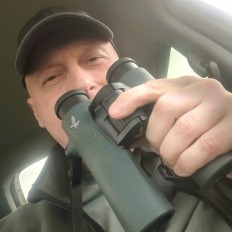Top species
- Alpine Swift (Tachymarptis melba)
- Middle Spotted Woodpecker (Dendrocoptes medius)
- White-backed Woodpecker (Dendrocopos leucotos)
- Gray-headed Woodpecker (Picus canus)
- Black Woodpecker (Dryocopus martius)
- Red-backed Shrike (Lanius collurio)
- Sombre Tit (Poecile lugubris)
- Marsh Tit (Poecile palustris)
- Wood Lark (Lullula arborea)
- Eurasian Crag-Martin (Ptyonoprogne rupestris)
- Red-rumped Swallow (Cecropis daurica)
- White-throated Dipper (Cinclus cinclus)
- Collared Flycatcher (Ficedula albicollis)
- Rock Bunting (Emberiza cia)
- Ortolan Bunting (Emberiza hortulana)
List up to ca. 25 species that:
• have a limited distribution range and/or are rare on a global level
• are most sought-after by birdwatchers at this site
• and are relatively easy to see at this site (year-round or seasonally)
| Alpine Swift (Tachymarptis melba) | |
| Middle Spotted Woodpecker (Dendrocoptes medius) | |
| White-backed Woodpecker (Dendrocopos leucotos) | |
| Gray-headed Woodpecker (Picus canus) | |
| Black Woodpecker (Dryocopus martius) | |
| Red-backed Shrike (Lanius collurio) | |
| Sombre Tit (Poecile lugubris) | |
| Marsh Tit (Poecile palustris) | |
| Wood Lark (Lullula arborea) | |
| Eurasian Crag-Martin (Ptyonoprogne rupestris) | |
| Red-rumped Swallow (Cecropis daurica) | |
| White-throated Dipper (Cinclus cinclus) | |
| Collared Flycatcher (Ficedula albicollis) | |
| Rock Bunting (Emberiza cia) | |
| Ortolan Bunting (Emberiza hortulana) |
Collared Flycatcher (Ficedula albicollis) was added by Dragan Simic (2023-05-22 16:27:53)
Marsh Tit (Poecile palustris) was added by Dragan Simic (2023-05-22 16:26:48)
Black Woodpecker (Dryocopus martius) was added by Dragan Simic (2023-05-22 16:26:03)
Red-backed Shrike (Lanius collurio) was added by Dragan Simic (2023-05-07 06:56:05)
Red-rumped Swallow (Cecropis daurica) was added by Dragan Simic (2023-05-07 06:52:28)
Eurasian Crag-Martin (Ptyonoprogne rupestris) was added by Dragan Simic (2023-05-07 06:52:10)
White-backed Woodpecker (Dendrocopos leucotos) was added by Dragan Simic (2023-05-07 06:16:43)
Alpine Swift (Tachymarptis melba) was added by Dragan Simic (2023-05-07 06:16:10)
Middle Spotted Woodpecker (Dendrocoptes medius) was added by Dragan Simic (2023-05-07 06:15:51)
Gray-headed Woodpecker (Picus canus) was added by Dragan Simic (2023-05-07 06:15:37)
Wood Lark (Lullula arborea) was added by Dragan Simic (2023-05-07 06:15:07)
White-throated Dipper (Cinclus cinclus) was added by Dragan Simic (2023-05-07 06:14:49)
Sombre Tit (Poecile lugubris) was added by Dragan Simic (2023-05-07 06:14:38)
Ortolan Bunting (Emberiza hortulana) was added by Dragan Simic (2023-05-07 06:14:22)
Rock Bunting (Emberiza cia) was added by Dragan Simic (2023-05-07 06:14:10)


